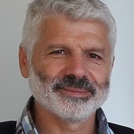Physiological Responses During Exercise
A special issue of Sports (ISSN 2075-4663).
Deadline for manuscript submissions: closed (31 December 2018) | Viewed by 107208
Special Issue Editors
Interests: training adaptations; exercise physiology
Special Issues, Collections and Topics in MDPI journals
Interests: aquatic sports; sports performance optimization; fatigue and recovery
Special Issues, Collections and Topics in MDPI journals
Special Issue Information
Dear Colleagues,
Athletes in all sports, and exercising people, use various types of exercise and several combinations of exercise modes in their regular training. Each mode and type of exercise presents unique characteristics and difficulties related to its duration, intensity, rest interval duration the environmental conditions and personal abilities. The physiological responses of any exercise type may reflect muscular, cardiovascular, metabolic, hormonal, energetic and several other regulatory alterations. Advancing the knowledge and understanding of physiological responses in all types of exercise will facilitate training planning for performance enhancement and health benefits. This Special Issue within Sports, entitled “Physiological Responses During Exercise”, will accept experimental research, including literature reviews, as applied to any mode and type of exercise. A 50% discount for a future publication in "Sports" will be offered to the three best accepted papers as selected by the editors.
Assist. Prof. Argyris Toubekis
Dr. Petros Botonis
Guest Editors
Manuscript Submission Information
Manuscripts should be submitted online at www.mdpi.com by registering and logging in to this website. Once you are registered, click here to go to the submission form. Manuscripts can be submitted until the deadline. All submissions that pass pre-check are peer-reviewed. Accepted papers will be published continuously in the journal (as soon as accepted) and will be listed together on the special issue website. Research articles, review articles as well as short communications are invited. For planned papers, a title and short abstract (about 100 words) can be sent to the Editorial Office for announcement on this website.
Submitted manuscripts should not have been published previously, nor be under consideration for publication elsewhere (except conference proceedings papers). All manuscripts are thoroughly refereed through a single-blind peer-review process. A guide for authors and other relevant information for submission of manuscripts is available on the Instructions for Authors page. Sports is an international peer-reviewed open access monthly journal published by MDPI.
Please visit the Instructions for Authors page before submitting a manuscript. The Article Processing Charge (APC) for publication in this open access journal is 1800 CHF (Swiss Francs). Submitted papers should be well formatted and use good English. Authors may use MDPI's English editing service prior to publication or during author revisions.
Keywords
- metabolism
- performance
- health
- interval exercise
- continous exercise
- young athletes
- individual and team-sports
- environment
Benefits of Publishing in a Special Issue
- Ease of navigation: Grouping papers by topic helps scholars navigate broad scope journals more efficiently.
- Greater discoverability: Special Issues support the reach and impact of scientific research. Articles in Special Issues are more discoverable and cited more frequently.
- Expansion of research network: Special Issues facilitate connections among authors, fostering scientific collaborations.
- External promotion: Articles in Special Issues are often promoted through the journal's social media, increasing their visibility.
- e-Book format: Special Issues with more than 10 articles can be published as dedicated e-books, ensuring wide and rapid dissemination.
Further information on MDPI's Special Issue polices can be found here.







